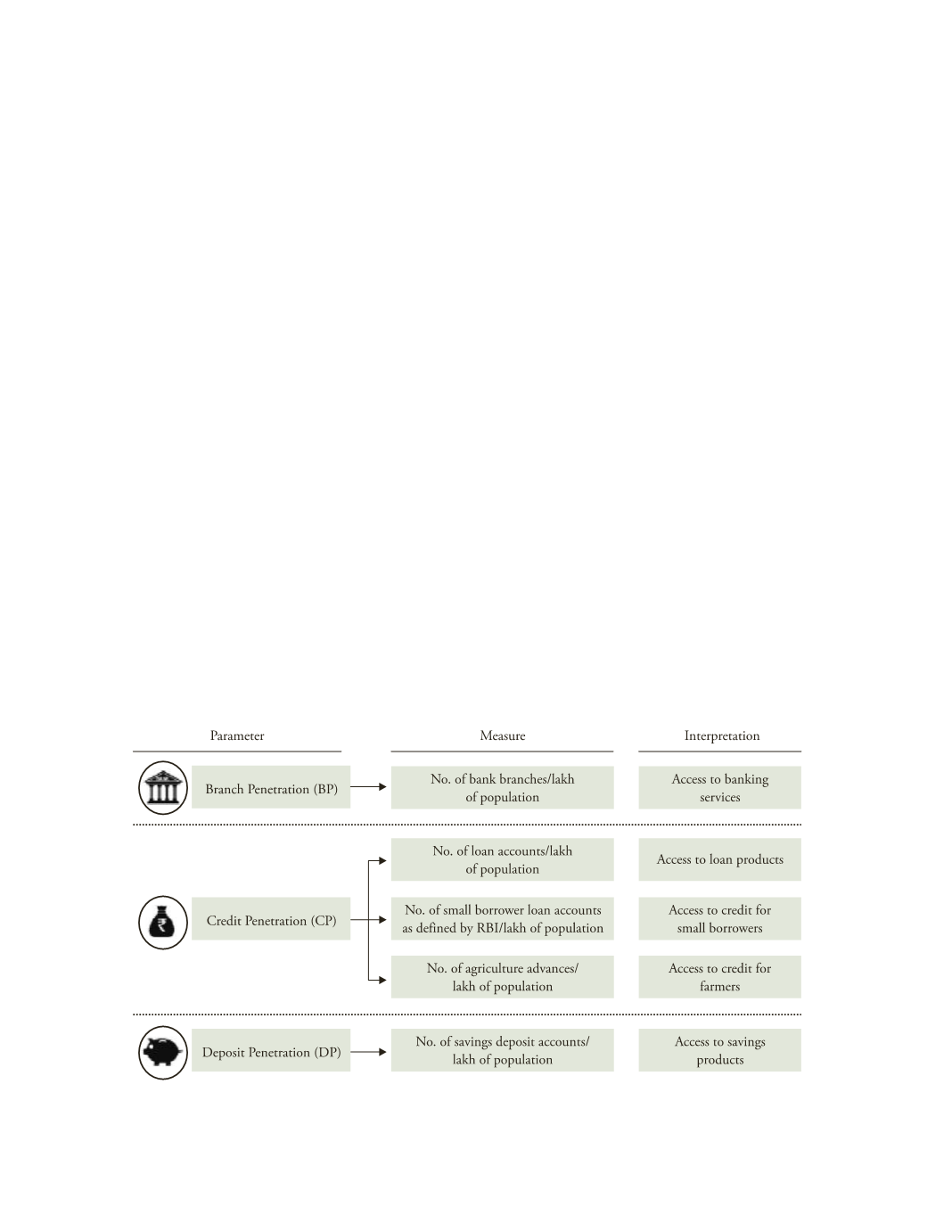
i nc lu s i ve f i nanc e
7
Overall 45 per cent of the urban residents and 32
per cent of the rural residents were estimated to
be having bank accounts. There is also significant
variation from district to district.
18
(viii) A more widely followed analysis of the extent of
financial inclusion is available from the CRISIL
Inclusix which was first released in 2013 and in
2014 has released the second round of findings
pertaining to 2012. Besides there was a new study by
Financial Inclusion Insights, which undertook the
most comprehensive survey of financial behaviour
in India during 2013–14. The results and findings
of these studies are reported and discussed in greater
detail as follows.
1.4.1 CRISIL Inclusix
CRISIL launched the Inclusix tool, developed with sup-
port from Ministry of Finance, Government of India and
Reserve Bank of India in the year 2013. In January 2014,
CRISIL brought out the latest computation of Inclusix
based on the data made available by Reserve Bank of
India till March 2012 and covered all the 638
19
districts
of the country.
CRISIL uses a statistically robust and transparent
methodology. It is a relative index on a scale of 0 to 100,
and combines three critical parameters of basic banking
services—branch penetration, deposit penetration, and
credit penetration—into one metric. Besides measur-
ing inclusion at the district, state and national levels,
the index can be used to compute progress on financial
inclusion by each bank. CRISIL Inclusix also enables
inter-temporal comparison for financial inclusion. The
latest Inclusix assesses trends in financial inclusion in
India in fiscal 2012 compared with 2011, 2010 and 2009.
Based on CRISIL Inclusix scores, CRISIL has come up
with four categories—low (<25), below average (25.0 to
40.1), above average (40.1 to 55) and high (>55) levels of
financial inclusion.
As evident from Figure 1.2 whilst calculating financial
inclusion CRISIL Inclusix uses non-monetary aggregates
like ‘number of people’ whose lives have been touched
by various financial services, rather than the ‘amounts’
deposited or loaned—which negates the disproportionate
impact of a few high-value figures on the overall picture.
Currently the index has been calculated based on
the data related to the banking system (scheduled com-
mercial banks and RRBs) provided by the RBI (Figure
1.3). Data from a large network of cooperative banks and
F
IGURE
1.2
CRISIL Inclusix


